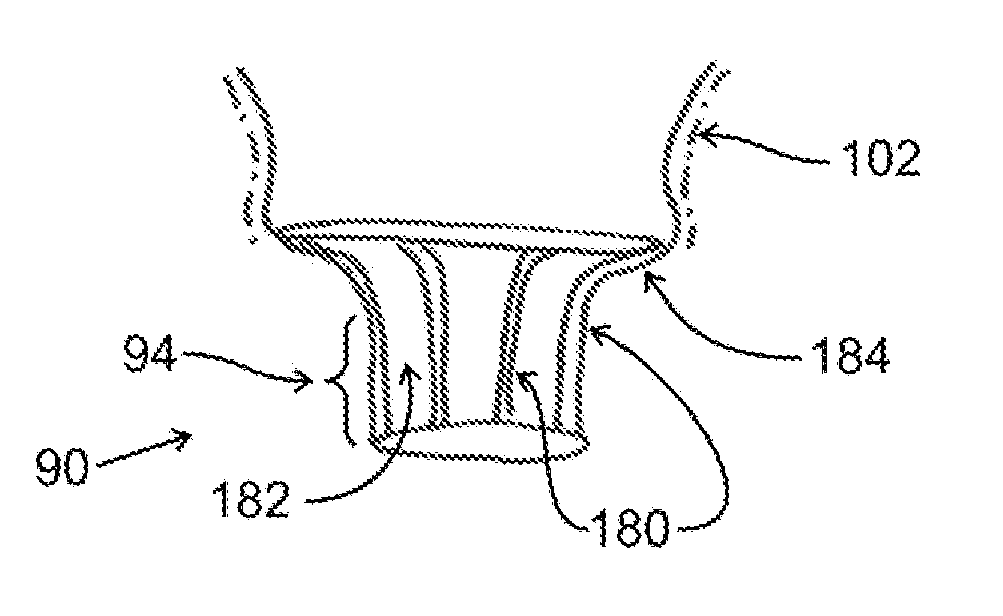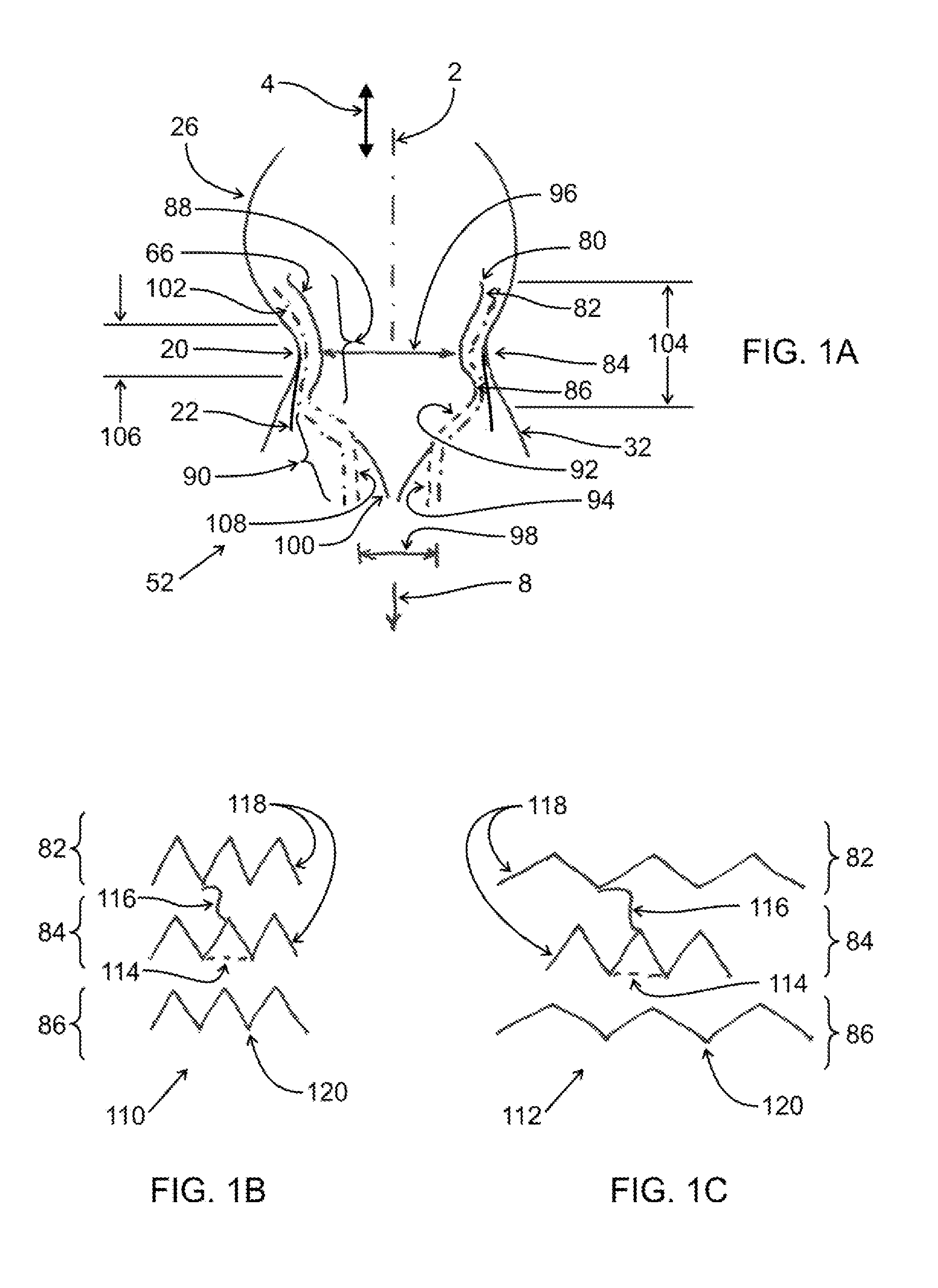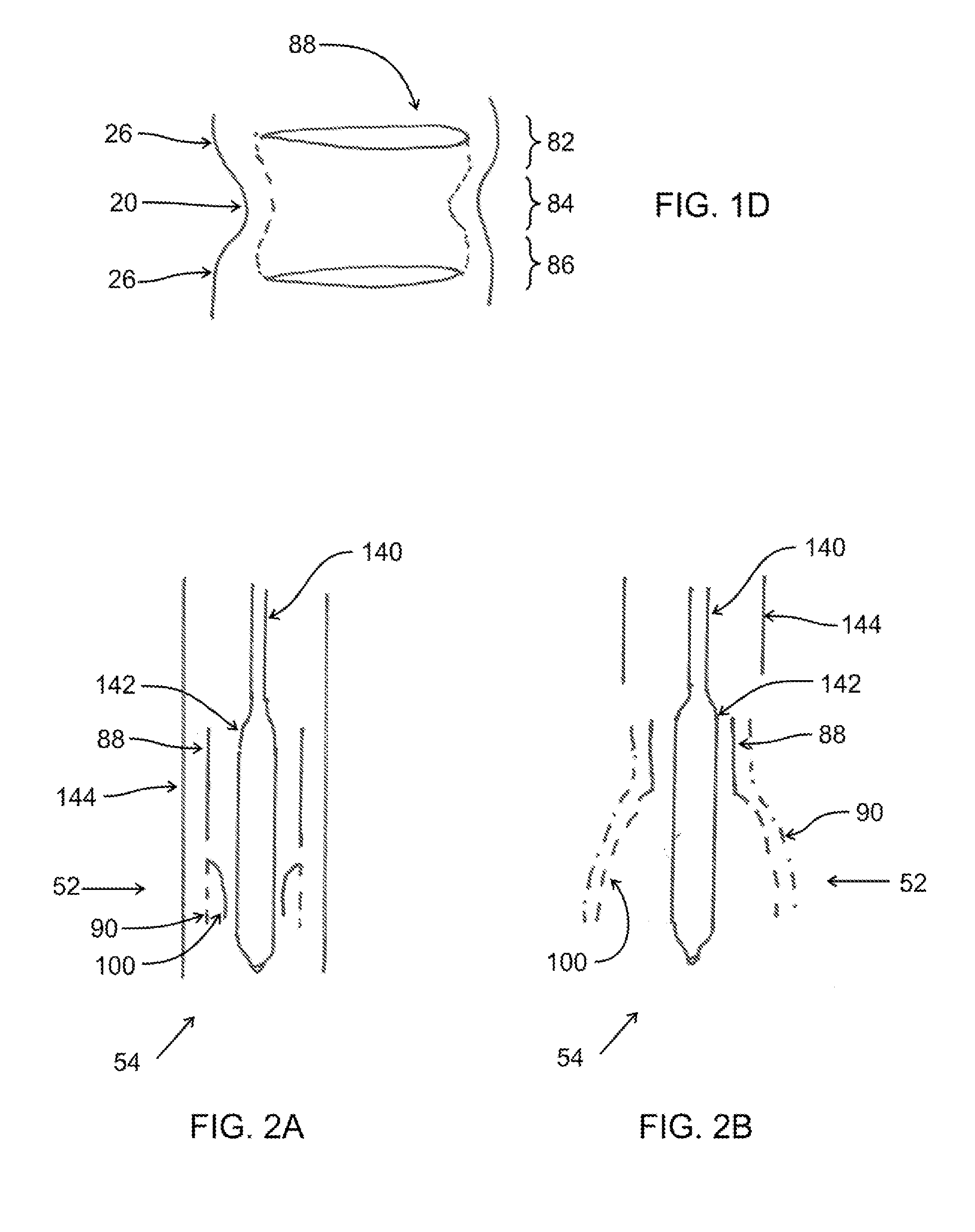Transcatheter Mitral Valve Replacement Apparatus
a technology of transcatheter and mitral valve, which is applied in the field of medical devices, can solve the problems of abnormal tension and angulation of the mitral valve leaflet, the less invasive surgical procedure is not as well developed for replacing abnormally functioning mitral valves, and the flow of regurgitants that require repair or replacement of valves, etc., to achieve the effect of reducing the delivery profile of the replacement valve, reducing thrombosis, and improving blood flow
- Summary
- Abstract
- Description
- Claims
- Application Information
AI Technical Summary
Benefits of technology
Problems solved by technology
Method used
Image
Examples
Embodiment Construction
[0117]One embodiment of the valve of the present invention is shown in FIGS. 1A-1D. Replacement valve 52 has a mitral annular holding structure or stent 66 comprising stabilizing portion 88. Replacement valve 52 also comprises tract element 90. Stabilizing portion 88 of stent 66 for this embodiment is formed from a BE material such as stainless steel, cobalt alloy, or other materials, including polymeric materials used for forming stents; the BE material can also be NiTi or other elastic metals used in medical stents that is machined to form a focused region at the expansion sites that will deform plastically. Stabilizing portion 88 has a waist 84 with a waist diameter 96 that is somewhat smaller than the mitral annulus 20 to which it is positioned adjacently. A somewhat enlarged region or upper bulb 82 is joined to waist 84 and is of a larger diameter by approximately 2-10 mm than waist 84; the upper bulb 82 preferably has a free end 80 which is curved toward the centerline or axis...
PUM
 Login to View More
Login to View More Abstract
Description
Claims
Application Information
 Login to View More
Login to View More - R&D
- Intellectual Property
- Life Sciences
- Materials
- Tech Scout
- Unparalleled Data Quality
- Higher Quality Content
- 60% Fewer Hallucinations
Browse by: Latest US Patents, China's latest patents, Technical Efficacy Thesaurus, Application Domain, Technology Topic, Popular Technical Reports.
© 2025 PatSnap. All rights reserved.Legal|Privacy policy|Modern Slavery Act Transparency Statement|Sitemap|About US| Contact US: help@patsnap.com



